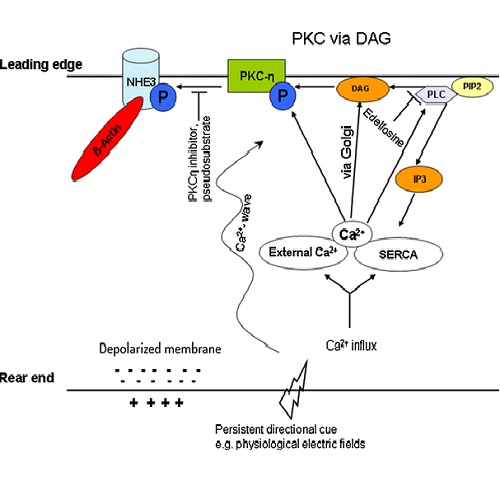NHE3 phosphorylation via PKCη marks the polarity and orientation of directionally migrating cells.
Endogenous electric fields (EF) may provide an overriding cue for directional cell migration during wound closure. Perceiving a constant direction requires active sodium-hydrogen exchanger (pNHE3) at the leading edge of HEK 293 cells but its activation mechanism is not yet fully understood. Because protein kinase C (PKC) is required in electrotaxis, we asked whether NHE3 is activated by PKC during wound healing. Using pharmacological (pseudosubstrate and edelfosine) inhibition, we showed that inhibition of PKCη isoform impairs directional cell migration in HEK 293 cells in the presence of a persistent directional cue (0.25-0.3 V/mm of EF for 2 h). Further, we found that pNHE3 forms complexes with both PKCη and ɣ-tubulin, suggesting that these molecules may regulate the microtubule-organizing center. In addition, cellular pNHE3 content was reduced significantly when PKCη was inhibited during directional cell migration. Taken together, these data suggest that PKCη-dependent phosphorylation of NHE3 and the formation of pNHE3/PKCη/ɣ-tubulin complexes at the leading edge of the cell are required for directional cell migration in an EF.

- Cell. Mol. Life Sci. 2014 Dec 01;71(23):4653-63
- 2014
- Cell Biology
- 24788043
- PubMed
Enabled by:
